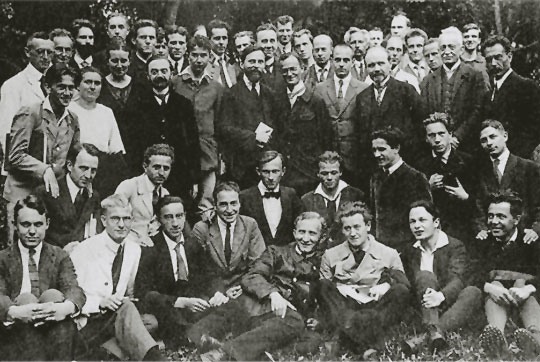|
Dillingen, Bavaria
Dillingen or Dillingen an der Donau (Dillingen at the Danube) is a town in Swabia, Bavaria, Germany. It is the administrative center of the district of Dillingen. Besides the town of Dillingen proper, the municipality encompasses the villages of Donaualtheim, Fristingen, Hausen, Kicklingen, Schretzheim and Steinheim. Schretzheim is notable for its 6th to 7th century Alemannic cemetery, 630 row graves in an area of 100 by 140 metres. History The counts of Dillingen ruled from the 10th to the 13th century; in 1258 the territory was turned over to the Prince Bishops of Augsburg. After the Reformation, the prince-bishops of Augsburg moved to the Catholic city of Dillingen and made it one of the centers of the Counter-Reformation. In 1800, during the War of the Second Coalition, the armies of the French First Republic, under command of Jean Victor Moreau, fought Habsburg regulars and Württemberg contingents, under the general command of Pál Kray. Kray had taken refuge in ... [...More Info...] [...Related Items...] OR: [Wikipedia] [Google] [Baidu] |
Bayerisches Landesamt Für Statistik
The statistical offices of the German states ( German: ''Statistische Landesämter'') carry out the task of collecting official statistics in Germany together and in cooperation with the Federal Statistical Office. The implementation of statistics according to Article 83 of the constitution is executed at state level. The federal government A federation (also known as a federal state) is a political entity characterized by a union of partially self-governing provinces, states, or other regions under a central federal government (federalism). In a federation, the self-governin ... has, under Article 73 (1) 11. of the constitution, the exclusive legislation for the "statistics for federal purposes." There are 14 statistical offices for the 16 states: See also * Federal Statistical Office of Germany References {{Reflist Germany Statistical offices Germany ... [...More Info...] [...Related Items...] OR: [Wikipedia] [Google] [Baidu] |
Electorate Of Württemberg
The Electorate of Württemberg was a short-lived state of the Holy Roman Empire on the right bank of the Rhine. In 1803, Napoleon raised the Duchy of Württemberg to the Electorate of Württemberg, the highest form of a princedom in the Holy Roman Empire. However, soon afterward, on 1 January 1806, the last Elector assumed the title of King of Württemberg. Later, the last Emperor, Francis II, abolished ''de facto'' the empire on 6 August 1806. History Charles Eugene, Duke of Württemberg left no legitimate heirs and was succeeded by his two brothers, first Louis Eugene (died 1795), who was childless, and Frederick II Eugene (died 1797). Frederick II Eugene served in the army of Frederick the Great, to whom he was related by marriage, and then managed his family's estates around Montbéliard. He educated his children in the Protestant faith as francophones, and all members of the subsequent Württemberg royal family were descended from him. Thus, when his son became duke in 179 ... [...More Info...] [...Related Items...] OR: [Wikipedia] [Google] [Baidu] |
Sebastian Kneipp
Sebastian Kneipp (17 May 1821 – 17 June 1897) was a German Catholic priest and one of the forefathers of the naturopathic medicine movement. He is most commonly associated with the "Kneipp Cure" form of hydrotherapy (often called "Kneipp therapy" or "Kneippism"), the application of water through various methods, temperatures and pressures, which he claimed to have therapeutic or healing effects, thus building several hospitals in Bad Wörishofen. Although most commonly associated with one area of nature cure, Kneipp was the proponent of an entire system of healing, which rested on five main tenets: * Hydrotherapy – The use of water to treat ailments * Phytotherapy – The use of botanical medicines was another of Kneipp's specialties * Exercise – Promoting health of the body through movement * Nutrition – A wholesome diet of whole grains, fruits, and vegetables with limited meat. * Balance – Kneipp believed that a healthy mind begot a healthy person Early life Kneip ... [...More Info...] [...Related Items...] OR: [Wikipedia] [Google] [Baidu] |
Georg Philipp Wörlen
Georg Philipp Wörlen (5 May 1886, Dillingen an der Donau, Bavarian Swabia – 18 April 1954) was a German painter, particularly associated with Passau, Bavaria, Germany. Life Wörlen was born in Dillingen an der Donau. After completing his ''Abitur'' he attended the art college in Nuremberg and subsequently worked as a restorer in the Atelier Altheimer in Regensburg. In 1914, after marrying Margarete Neunhöfer, he moved to Marnheim to work as a teacher in a technical secondary school. While he was fighting at the front in World War I in Romania and France, among other places, his son Hanns Egon was born. During the war Wörlen was twice buried and seriously injured. Shortly before the end of the war he was captured by the British and was held as a prisoner of war for 15 months, in a camp near Ripon in Yorkshire. During this time he changed his artistic direction and committed himself to Expressionism and Cubism. After his repatriation in 1920 Wörlen moved with his f ... [...More Info...] [...Related Items...] OR: [Wikipedia] [Google] [Baidu] |
The Christian Community
The Christian Community (german: Die Christengemeinschaft) is an esoteric Christian denomination. It was founded in 1922 in Switzerland by a group of ecumenically oriented, mainly Lutheran theologians and ministers led by liberal theologian Friedrich Rittelmeyer, who had been the most prominent representative of liberal Lutheranism in Germany during the First World War and whose early theological work had focused on the concept of a socially engaged "Christianity of deeds" (''Tatchristentum'').Johannes Hemleben, ''Rudolf Steiner: A documentary biography'', Henry Goulden Ltd, 1975, , pp. 134–138 (German edition: Rowohlt Verlag, 1990, ) Rittelmeyer and the other founders were inspired by Rudolf Steiner, the Austrian philosopher and founder of anthroposophy. The community has its historical roots partially in the broader liberal Christian tradition, and partially in the esoteric and gnostic tradition as well as German new humanism, as well as anthroposophy, though The Christia ... [...More Info...] [...Related Items...] OR: [Wikipedia] [Google] [Baidu] |

